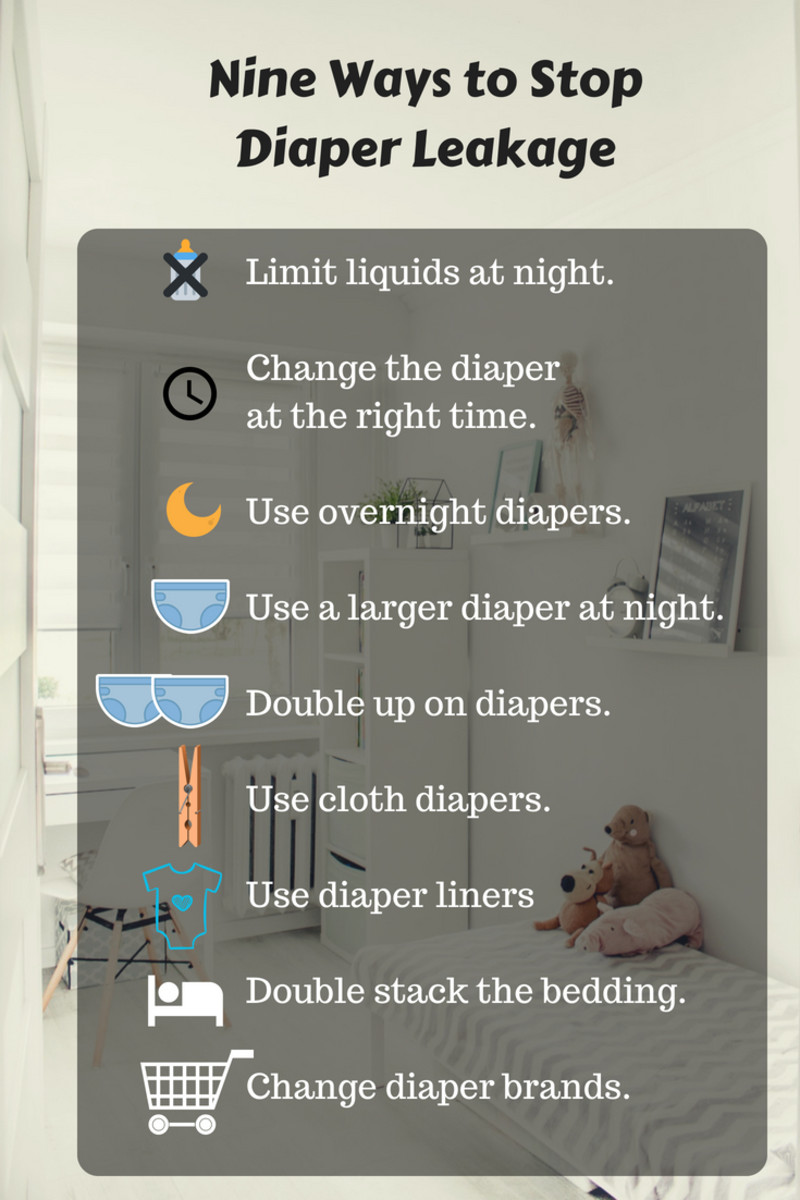To prevent baby peeing while changing a diaper, use a cold wipe on their lower belly. This triggers the pee reflex before removing the diaper.
Changing a baby’s diaper can sometimes turn into a messy situation if they urinate unexpectedly. Parents can use a simple trick to avoid this. Gently wipe the baby’s lower belly with a cold wipe before removing the old diaper. This action can trigger their pee reflex, causing them to urinate before the diaper comes off.
By planning ahead, parents can keep diaper changes clean and stress-free. This technique is easy to implement and makes the diaper-changing process smoother for both the baby and the caregiver.

Credit: wehavekids.com
Preparation Is Key
Changing a baby’s diaper can be a challenging task, especially if they pee during the process. The key to preventing baby pee mishaps is thorough preparation. By having everything ready beforehand, you can ensure a smoother and cleaner diaper change.
Gather Supplies
Start by gathering all necessary supplies. This will make the diaper change quick and efficient. Here’s a checklist to help:
- Clean diapers
- Wipes or a damp cloth
- Diaper rash cream
- Changing mat or clean towel
- Extra clothes
Having these items within reach will reduce delays. This means fewer chances for unexpected accidents.
Choose The Right Spot
Choosing the right spot is crucial for a successful diaper change. Ensure the area is clean and safe. Use a changing table, bed, or a clean floor space. Place a waterproof mat or towel underneath your baby. This protects surfaces from unexpected leaks.
Make sure the chosen spot is comfortable for both you and the baby. A comfortable environment helps keep the baby calm and minimizes wriggling.
| Spot | Benefits |
|---|---|
| Changing Table | Elevated, reduces back strain |
| Bed | Soft, comfortable surface |
| Clean Floor | Safe, spacious area |
Always keep one hand on your baby while changing. This prevents falls and keeps them safe.
Timing Matters
Changing a baby’s diaper can be a challenging task. One of the most common issues is preventing your baby from peeing during the change. The key to success lies in proper timing. Understanding the optimal moments and signs can save you a lot of mess and stress.
Optimal Times
Timing your diaper change can make a big difference. Here are some optimal times to change your baby’s diaper:
- Just after feeding: Babies often pee right after they eat.
- Before naps: Babies like to sleep in a dry diaper.
- After waking up: Babies usually pee after they wake up.
Changing the diaper during these times can reduce the chances of unexpected accidents. Plan your diaper changes around these key moments to keep your baby dry and happy.
Signs To Watch
Watching for specific signs can help you anticipate when your baby might pee. Here are some signs to look for:
- Fidgeting: Your baby may start to wiggle or squirm.
- Facial expressions: Watch for focused or tense faces.
- Pausing: Babies often stop their activities before peeing.
Paying attention to these signs can help you time your diaper changes more effectively. This can prevent a lot of mess and make the process smoother.
Keep Baby Warm
Babies often pee when they feel cold during diaper changes. Keeping your baby warm can help prevent this. A warm baby feels comfortable and less likely to pee unexpectedly.
Use A Warming Cloth
A simple way to keep your baby warm is using a warming cloth. Place a soft, warm cloth on your baby’s belly during diaper changes. This helps maintain their body temperature.
Here’s how you can do it:
- Warm a cloth with warm water.
- Ensure the cloth is not too hot.
- Place the cloth on your baby’s belly.
Using a warming cloth can make your baby feel secure. This method can reduce the chances of unexpected pee.
Adjust Room Temperature
Room temperature plays a crucial role in keeping your baby warm. An ideal room temperature makes your baby feel cozy.
Use a thermometer to check the room temperature. The ideal temperature is between 68°F (20°C) and 72°F (22°C).
Here’s a simple table to guide you:
| Temperature (°F) | Temperature (°C) | Comfort Level |
|---|---|---|
| Below 68°F | Below 20°C | Too Cold |
| 68°F – 72°F | 20°C – 22°C | Comfortable |
| Above 72°F | Above 22°C | Too Warm |
Keep the room warm to ensure your baby stays comfortable. This can help prevent unexpected peeing during diaper changes.
Distract And Engage
Changing diapers can sometimes be a challenge. Babies can be wiggly and unpredictable. One effective strategy is to distract and engage them. This approach can prevent those unexpected peeing incidents. Here are some tips to keep your baby occupied and happy during diaper changes.
Use Toys
Babies love toys. Keep a few special toys near the changing area. These toys should be different from their everyday toys. This way, they seem new and exciting. Colorful and interactive toys work best. Think of toys that make noise or light up.
- Rattles
- Soft plush toys
- Teething rings
- Light-up toys
Hand your baby a toy before you start. This keeps their hands busy and their mind engaged. They might even forget they are having their diaper changed.
Sing Or Talk
Your voice is magic to your baby. Singing or talking can be a great distraction. Sing your baby’s favorite song. It doesn’t have to be perfect. Babies love the sound of their parent’s voice.
- Choose a song your baby likes.
- Sing with enthusiasm.
- Talk in a soothing voice.
- Tell a short story.
You can also tell a funny story or make silly sounds. This keeps your baby entertained and less likely to pee. Your baby will enjoy the attention and stay still longer.
Quick And Efficient Technique
Changing diapers can be tricky. Babies often pee during the process. Using a quick and efficient technique can help. This method involves organizing steps and practicing speed.
Organize Steps
Before starting, gather all needed items. This includes a fresh diaper, wipes, and a changing pad. Having everything nearby saves time.
- Place the changing pad on a flat surface.
- Lay out the fresh diaper and open it.
- Open the wipes container for easy access.
Keep a small towel or cloth handy. It can cover the baby if they start to pee. This simple preparation can prevent messes.
Practice Speed
Speed is key when changing a diaper. Follow these steps to practice:
- Unfasten the old diaper but do not remove it yet.
- Lift the baby’s legs gently, keeping the diaper under them.
- Wipe quickly but thoroughly. Use enough wipes to clean well.
- Slide the old diaper out and place the new one in position.
- Fasten the new diaper securely.
Practicing these steps helps reduce the time the baby is uncovered. Less time uncovered means less chance of accidents.
For a quicker change, use a wipe warmer. Warm wipes are more comfortable and may keep the baby calm.

Credit: www.amazon.com
Use A Pee Guard
Changing a baby’s diaper can be tricky, especially with boys. One moment you’re wiping them clean, and the next, there’s a pee fountain. To prevent this, many parents use a pee guard. A pee guard helps keep your baby dry during diaper changes.
Towel Shield
A simple towel can act as a pee guard. Place a small towel over the baby’s privates. This will catch any unexpected spray. Make sure the towel is soft and clean. You can use a washcloth as well. This method is cost-effective and easy to implement.
Commercial Products
There are commercial products designed to prevent baby peeing during diaper changes. These products are often called pee guards or pee shields. They come in different shapes and sizes. Here are a few popular options:
| Product Name | Description | Price Range |
|---|---|---|
| Pee-Pee Teepee | A small cone-shaped cloth that fits over the baby’s privates. | $10 – $15 |
| Wee Block | A rubber or plastic shield with a cute design. | $8 – $12 |
| Diaper Guard | A reusable shield that clips onto the diaper. | $12 – $18 |
These products are designed to be reusable and washable. They often have fun designs that can make diaper changes more enjoyable. Check product reviews before buying to ensure quality and effectiveness.
Post-diaper Change Routine
After changing your baby’s diaper, it’s essential to follow a post-diaper change routine. This ensures your baby stays dry, comfortable, and happy. Here’s a simple yet effective routine to follow:
Dry And Clean
Ensuring your baby is dry and clean is crucial. Use gentle baby wipes to remove any remaining moisture. Pat the skin with a soft cloth to dry it completely.
Apply a thin layer of diaper cream to prevent rashes. This creates a protective barrier between the diaper and your baby’s skin.
Inspect the diaper area for any signs of irritation. Redness or bumps may indicate a developing rash. Address it immediately with appropriate care.
Comfort And Cuddle
After ensuring dryness, it’s time for some comfort and cuddle. Hold your baby close and talk softly. This reassures them and strengthens your bond.
Wrap your baby in a cozy blanket. Make sure they feel secure and warm. Gentle rocking can also soothe them after a diaper change.
Sing a lullaby or play soft music. This helps your baby relax and feel safe. Creating a calm environment is key to a happy baby.
| Step | Action |
|---|---|
| 1 | Use gentle wipes |
| 2 | Pat dry with a soft cloth |
| 3 | Apply diaper cream |
| 4 | Inspect for irritation |
| 5 | Hold and cuddle baby |
| 6 | Wrap in a cozy blanket |
| 7 | Sing a lullaby |
Following this routine can make diaper changes easier and more pleasant. Your baby stays dry, comfortable, and loved.
Handling Accidents
Accidents happen, especially during diaper changes. Babies can pee unexpectedly, causing messes. Knowing how to handle these incidents calmly and effectively is crucial. This section will guide you through the process of staying calm and cleaning up efficiently.
Stay Calm
First and foremost, stay calm. Accidents are normal and part of parenting. Panicking will only stress you and your baby. Take a deep breath and remember, you can handle this.
It’s helpful to keep a sense of humor. Babies sense your mood, so staying relaxed helps them stay calm too. Prepare for accidents by having everything you need within reach.
Clean Up Process
Start by gently wiping your baby with a clean cloth. Remove any soiled clothes or blankets. Have a spare diaper and fresh clothes ready to go.
Follow these steps to clean up quickly:
- Place a clean cloth or towel under your baby.
- Use gentle wipes to clean their skin.
- Pat the area dry with a soft cloth.
- Apply diaper cream to prevent rashes.
- Put on a fresh diaper and clean clothes.
Remember to wash your hands thoroughly after cleaning up. Keeping the changing area clean is also important. Use disinfectant wipes to sanitize the surface.
By staying calm and following a clear clean-up process, you can handle accidents with ease. This helps to keep your baby comfortable and happy during diaper changes.

Credit: mumsgrapevine.com.au
Frequently Asked Questions
How Can I Stop My Baby From Peeing During Diaper Changes?
To prevent your baby from peeing during diaper changes, keep them warm. Use a warm wipe or cloth on their belly to reduce the urge to pee.
Why Do Babies Pee During Diaper Changes?
Babies often pee during diaper changes because the cool air hitting their skin can trigger urination. Keeping them warm helps.
What Are Some Tips To Prevent Diaper Change Accidents?
Some tips include using a changing pad, keeping a cloth nearby, and changing diapers quickly. Warm wipes can also help.
Should I Change My Baby’s Diaper Quickly?
Yes, changing your baby’s diaper quickly can minimize the chance of them peeing. Be prepared with everything you need beforehand.
Conclusion
Preventing baby peeing during diaper changes can be manageable. Use distraction techniques, keep supplies ready, and change diapers swiftly. These tips make diaper changes smoother and less stressful. Remember, every baby is different, so find what works best for you and your little one.
Happy diaper changing!




